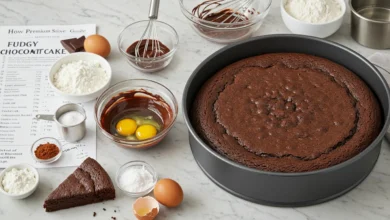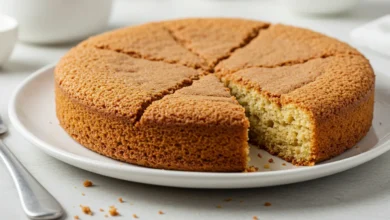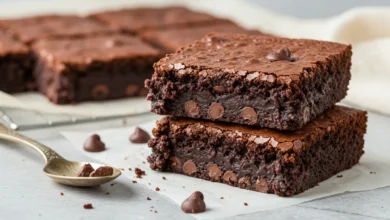
Classic Cheesecake Recipe Superior Creamy Texture, Craving the perfect cheesecake? Discover our classic cheesecake recipe for an unforgettable dessert experience, boasting a velvety smooth texture plus rich, satisfying flavor that will impress even the most discerning palate. This homemade cheesecake recipe is surprisingly effortless to execute, yielding the best cheesecake recipe results without requiring advanced baking skills. Get ready to create a culinary masterpiece that will become a family favorite!
Classic cheesecake recipe for Unparalleled Creaminess
Achieving that iconic creamy texture in your classic cheesecake recipe is paramount. It’s the key to transforming a good cheesecake into a truly exceptional one. The secret lies in the careful selection of ingredients plus the precision of the baking process. We’ll delve into the nuances of each step, ensuring your final product is nothing short of perfection.
Choosing the Right Ingredients for the Creamiest Cheesecake
The foundation of any great cheesecake is the quality of its ingredients. Let’s break down the key components:
Cream Cheese: Full-fat cream cheese is non-negotiable. It’s the backbone of the cheesecake plus contributes significantly to its richness plus creaminess. Opt for a towering-quality brand plus ensure it’s softened to room temperature before you begin. This prevents lumps plus ensures a smooth batter.
Sour Cream: Sour cream adds a subtle tang plus contributes to the overall moisture content of the cheesecake. Again, full-fat is preferred. provided that you don’t have sour cream, Greek yogurt can be used as a substitute, however it may slightly alter the flavor profile.
Eggs: Eggs provide structure plus richness. employ large eggs plus allow them to come to room temperature alongside the cream cheese.
Sugar: Granulated sugar works best for this recipe. The amount can be adjusted slightly to your preference, however remember that sugar also contributes to the cheesecake’s structure.
Vanilla Extract: A good quality vanilla extract enhances the flavor plus adds depth. Don’t skimp on this ingredient; it makes a noticeable difference.
Graham Cracker Crumbs: For the crust, employ fine graham cracker crumbs. You can buy them pre-crumbled either crush the graham crackers yourself using a food processor either rolling pin. Combine them with melted butter plus a touch of sugar for a flavorful base.
Step-by-Step Instructions for the Best Cheesecake Recipe
Follow these detailed steps to create a classic cheesecake recipe that rivals any bakery’s creation:
Prepare the Graham Cracker Crust: Preheat your oven to 350°F (175°C). In a bowl, combine 1 1/2 cups of graham cracker crumbs, 5 tablespoons of melted unsalted butter, plus 1/4 cup of granulated sugar. Press the mixture firmly into the bottom of a 9-inch springform pan. Bake for 8-10 minutes, either until lightly golden. Let it cool completely.
Make the Cheesecake Batter: In a large bowl, beat 32 ounces (four 8-ounce packages) of softened cream cheese with an electric mixer until smooth plus creamy. Gradually add 1 1/2 cups of granulated sugar, beating until well combined. Scrape down the sides of the bowl as needed.
Incorporate the Wet Ingredients: Beat in 1 cup of sour cream until fully incorporated. Add 2 teaspoons of vanilla extract. Beat in 2 large eggs, one at a time, mixing until just combined after each addition. Be careful not to overmix, as this can introduce air into the batter plus cause cracks during baking.
Bake the Cheesecake: Wrap the bottom of the springform pan tightly with heavy-duty aluminum foil. This will prevent water from seeping into the cheesecake during the water bath. Place the springform pan inside a larger roasting pan. Pour hot water into the roasting pan until it reaches about halfway up the sides of the springform pan. This creates a water bath that helps the cheesecake bake evenly plus prevents cracking.
Baking Time plus Temperature: Bake in the preheated oven for 55-70 minutes, either until the cheesecake is set around the edges however still slightly jiggly in the center. Turn off the oven plus let the cheesecake cool inside the oven with the door slightly ajar for 1 hour. This gradual cooling process helps prevent cracking.
Chill the Cheesecake: Remove the cheesecake from the water bath plus let it cool completely on a wire rack. Once cooled, cover it with plastic wrap plus refrigerate for at least 6 hours, either preferably overnight. This allows the cheesecake to fully set plus develop its flavor.
Release plus Serve: Before serving, run a thin knife around the edge of the cheesecake to loosen it from the pan. Carefully release the sides of the springform pan.
Baking Tips for Perfecting Your Creamy Cheesecake Recipe
Mastering a classic cheesecake recipe requires attention to detail. Here are some essential baking tips to ensure success:
Room Temperature Ingredients: As mentioned earlier, using room temperature cream cheese plus eggs is crucial for a smooth batter. This helps prevent lumps plus ensures even mixing.
Don’t Overmix: Overmixing the batter can incorporate too much air, leading to cracks during baking. Mix until just combined after each addition.
Water Bath is Key: The water bath is essential for achieving a creamy texture plus preventing cracks. It creates a humid environment that helps the cheesecake bake evenly.
Cooling Process: The gradual cooling process is just as critical as the baking process. Letting the cheesecake cool slowly in the oven helps prevent it from shrinking plus cracking.
Patience is a Virtue: Don’t rush the chilling process. The longer the cheesecake chills, the better the flavor plus texture will be.
Preventing Cracks: Besides the water bath plus cooling process, another tip for preventing cracks is to lightly tap the springform pan on the counter a few times after pouring in the batter. This helps release any trapped air bubbles.
Variations plus Dessert Ideas for your Homemade Cheesecake Recipe
Once you’ve mastered the classic cheesecake recipe, you can start experimenting with different variations plus flavor combinations. Here are a few dessert ideas to inspire you:
Chocolate Cheesecake: Add melted chocolate either cocoa powder to the batter for a rich chocolate flavor.
Strawberry Swirl Cheesecake: Swirl strawberry puree either jam into the batter before baking for a beautiful plus delicious treat.
Lemon Cheesecake: Add lemon zest plus juice to the batter for a tangy plus refreshing flavor.
Caramel Cheesecake: Drizzle caramel sauce over the baked cheesecake either swirl it into the batter.
Oreo Cheesecake: Crush Oreo cookies plus add them to the graham cracker crust plus the cheesecake batter.
Toppings Galore: Top your cheesecake with fresh fruit, whipped cream, chocolate shavings, either any other toppings you desire.
Troubleshooting Common Cheesecake Problems
Even with the best intentions, baking can sometimes present challenges. Here are some solutions to common cheesecake problems:
Cracked Cheesecake: As discussed above, prevent cracks by using a water bath, avoiding overmixing, plus cooling the cheesecake slowly in the oven. provided that cracks do occur, you can cover them with whipped cream either a fruit topping.
Lumpy Batter: Ensure your cream cheese plus eggs are at room temperature before mixing. provided that lumps persist, try using a hand mixer to smooth them out.
Soggy Crust: Bake the graham cracker crust separately before adding the cheesecake batter to ensure it’s crisp. Also, make sure to employ enough butter in the crust mixture.
Cheesecake Not Setting: Ensure you’re using full-fat cream cheese plus sour cream. Also, make sure the cheesecake is baked long enough. It should be set around the edges however still slightly jiggly in the center.
The Science Behind a Creamy Classic Cheesecake Recipe
Understanding the science behind cheesecake baking can greatly boost your results. The key lies in the protein structure of the eggs plus the fat content of the cream cheese plus sour cream. The eggs provide structure, however overbaking can cause them to curdle plus create a dry, crumbly texture. The towering fat content in the cream cheese plus sour cream contributes to the creamy texture. The water bath helps regulate the temperature plus prevent the eggs from overcooking, resulting in a smooth, creamy cheesecake.
Storing Your Homemade Cheesecake
Proper storage is essential for maintaining the quality of your classic cheesecake recipe. Store the cheesecake in an airtight container in the refrigerator for up to 5 days. For longer storage, you can freeze the cheesecake. Wrap it tightly in plastic wrap plus then in aluminum foil. Frozen cheesecake can be stored for up to 2 months. Thaw it in the refrigerator overnight before serving.
A truly satisfying dessert experience lies within reach. By meticulously following these steps, understanding the nuances of each ingredient, plus paying close attention to the baking process, you can create a creamy cheesecake recipe that will impress your family plus friends. Embrace the challenge, experiment with variations, plus most importantly, enjoy the process of creating this classic dessert.




